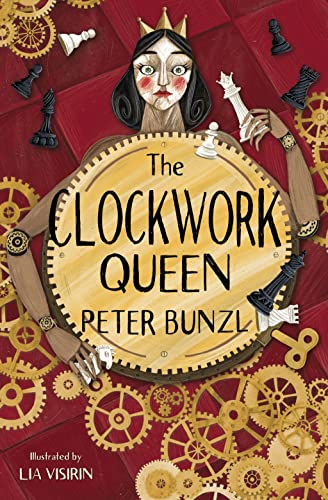The Clockwork Queen
18th-century St Petersburg, Russia. The autocratic Empress, Catherine the Great, has summoned the grandmaster of chess, Mr. Peshka, to teach her unstable son Paul chess. Paul refuses to learn, and Mr. Peshka is flung into a dungeon.
Meanwhile, Peshka’s friend Mr. Kon has created a mechanical automaton, the Clockwork Queen, who plays chess so well that she beats all challengers, but how it works is a mystery. Word reaches the Empress, who orders Mr. Kon and his daughter Olga to bring the Clockwork Queen to the Winter Palace to play the Empress herself. Olga invites Mr. Peshka’s chess-prodigy daughter, the 12-year-old Sophie, to join them. Olga shows Sophie the secret space inside the automaton where a child can sit and control the chessmen’s moves. They believe that Sophie is good enough to beat the Empress; Sophie hopes they can find some way to rescue her father—but it’s a huge risk…
I enjoyed this book—there is an element of Russian folk tales about it with the overpowerful and cruel Empress—and the poor but intelligent Sophie using her wits to help her friends and to rescue her father. It’s a first-person narrative, and Bunzl gets across Sophie’s mixture of naivety, courage and determination in a way which had me biting my fingernails. Lia Visirin’s woodcut-inspired illustrations have a Russian folklore feel which complements the story nicely.
In his afterword, Peter Bunzl tells us about his inspiration: Wolfgang von Kempelen’s 18th-century automaton, the Mechanical Turk, which also had a secret space inside for a child to dictate the moves of the game, and it toured royal European courts with the boast that the Mechanical Turk could beat anyone—however royal or noble. Children of 8 plus, especially those interested in chess, should enjoy The Clockwork Queen.










